Today the Patterson-Gimlin Film Turns 45
Posted by: Loren Coleman on October 20th, 2012

At TODAY’S < a href="http://cryptopalooza.com/">Cryptopalooza conference in Jefferson, Texas, I will speak of the Patterson-Gimlin footage’s filming and now importance, tied to this date of October 20th. This will mark the 45th anniversary of the event, and, my congratulations, once again, to two gentlemen for obtaining the best single, multifacted piece of evidence for the classic North American Sasquatch, Bigfoot, or Oh-Mah. Despite numerous attempts to discredit it, my sense is this one grows better with age.
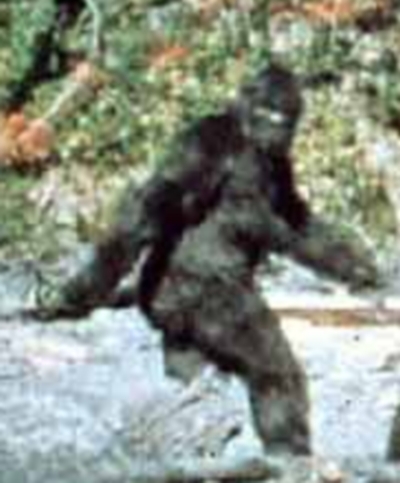
Anthropologist Grover Krantz, one of the good guys who sadly passed away on Valentine’s Day a few years ago, once estimated that about “100 million potentially visible track events” have occurred “in the last 40 years in areas where people coexist” with Bigfoot. That turns out to be about five possible track finds occurring every minute in the Pacific Northwest. Sightings, of course, occur much less frequently. A good piece of documentary-quality film footage of a Bigfoot is an even rarer event.
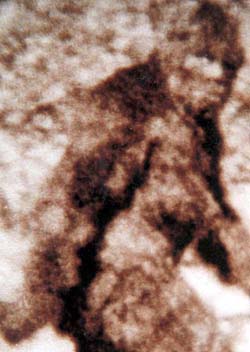
Why do I think the P-G footage is authentic?
I feel it combines many forms of evidence:
1. The event occurred in an area, in context, known for Native American traditions of these forms of hominoids. Locally, the cryptid is called oh-mah.
2. There are contemporary sightings, from the 1950s onward, here. Jerry Crew’s famed Bluff Creek finds of the footprints, and first use of the name “Bigfoot” date from those 1958 encounters.
3. In this specific incident, the animal was seen.
4. It was smelled.
5. It was sensed by the horses. Patterson’s horse threw him off.

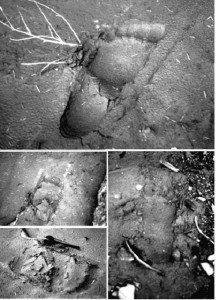
Photos from site: Lyle Laverty, October 1967, Bluff Creek, California.
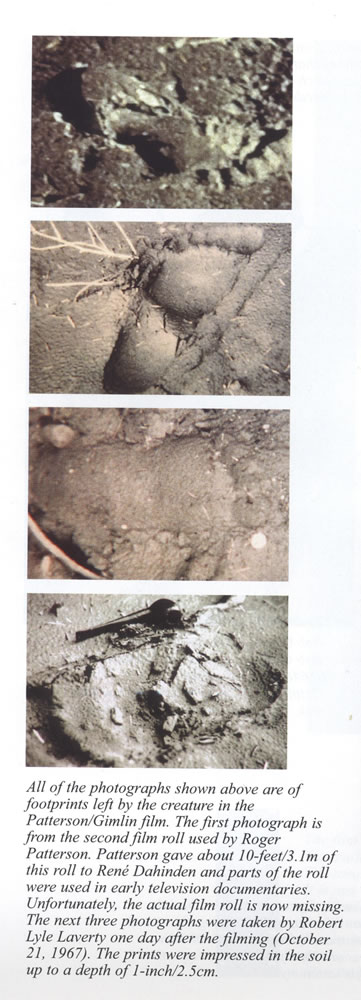
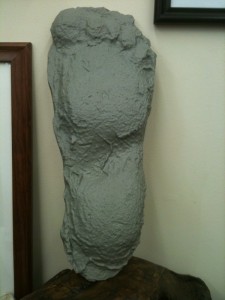
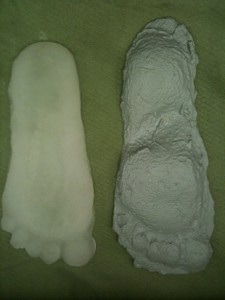
6. A trackway of ten prints was found, the tracks casted and preserved – via film and in a physical state – for others to analyze. Such examinations reveal flexible, animate feet for this cryptid, historically now known as a Bigfoot. Jeff Meldrum’s, following in Grover Krantz’s steps (no pun intended), are the two major analyses of them.
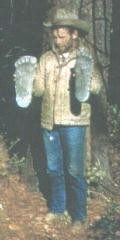
7. And finally, the apparent animal was filmed, and analysis of this footage by Americans, Canadians, Russians, and others verify this was authentic, probably recording an unknown primate, and it was not an elaborate or casual hoax, as assumed by debunkers and some closed-minded skeptics, in a few cases.

For me, all of the above combine (pancake, if you will) into the virtual and visible vortex of the best pieces of evidence for the existence of Bigfoot, short of a living or dead specimen, to date.
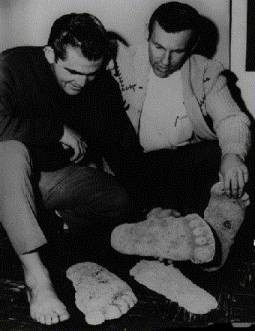
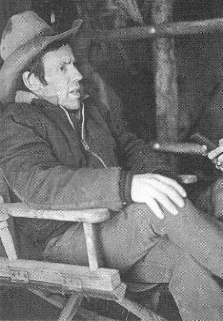
Here is how this specific Bigfoot incident is described in my The Field Guide of Bigfoot and Other Mystery Primates, which I coauthored with Patrick Huyghe.
October 20, 1967 Location: Bluff Creek, California, USA Witnesses: Roger Patterson, Robert Gimlin
While riding in the Six Rivers National Forest early one afternoon, Roger Patterson, an expert rodeo rider, and Robert Gimlin, a part Native American outdoorsman, rounded a bend and spotted a large upright creature on one of the creek’s sandbars. The dark, full-figured creature was covered with short hair (even on its large pendulous breasts) and possessed a sagittal crest. This bony ridge on top of the head, which supports heavy jaw muscles, has only been found, in primates, on certain fossil hominoids (especially Paranthropus) and among a few male apes, baboons, and other large modern species.
Patterson’s small Welsh pony smelled the creature and reared, bringing both pony and rider to the ground. But Patterson got up, grabbed his camera from the saddlebag, and while running toward the creature, took 24 feet of color film with the rented 16mm hand-held Kodak movie camera. The creature walked steadily away into the forest, turning its head once toward the camera. Gimlin, meanwhile, remained with his horse, a 30.06 rifle in hand, fearing his friend might be attacked. But the Bigfoot soon disappeared into the woods. Immediately after the filming and in the days that followed, casts of the tracks were taken from the many footprints–each 14.5 inch long by 6 inch wide–the creature had left in the sandy blue-gray clay soil.
Similar footprints found in this area over the years had drawn the two men from Yakima, Washington, to search the area and now they had 952 frames of color film to support the existence of this 6-to-7 feet tall, 500- to 700-pound creature. While scientists who have examined this footage remain divided on its authenticity to date–claims about men-in-suits from Hollywood notwithstanding–no firm evidence has surfaced to cast serious doubts on the film or the events that produced it. In particular, the apparent movement of the muscle underneath the hair argues strongly against a hoax. Native Americans, First Nation Canadians, and Alaskan Inuits all have legends, going back centuries of giant hairy men and women like the one seen in this film.
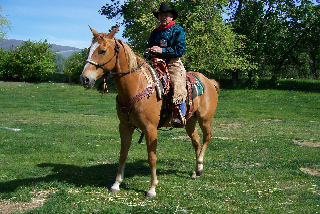
Bob Gimlin today, photo by Todd Neiss.
I can’t wait for the 50th anniversary!
About Loren Coleman
Loren Coleman is one of the world’s leading cryptozoologists, some say “the” leading living cryptozoologist. Certainly, he is acknowledged as the current living American researcher and writer who has most popularized cryptozoology in the late 20th and early 21st centuries.
Starting his fieldwork and investigations in 1960, after traveling and trekking extensively in pursuit of cryptozoological mysteries, Coleman began writing to share his experiences in 1969. An honorary member of Ivan T. Sanderson’s Society for the Investigation of the Unexplained in the 1970s, Coleman has been bestowed with similar honorary memberships of the North Idaho College Cryptozoology Club in 1983, and in subsequent years, that of the British Columbia Scientific Cryptozoology Club, CryptoSafari International, and other international organizations. He was also a Life Member and Benefactor of the International Society of Cryptozoology (now-defunct).
Loren Coleman’s daily blog, as a member of the Cryptomundo Team, served as an ongoing avenue of communication for the ever-growing body of cryptozoo news from 2005 through 2013. He returned as an infrequent contributor beginning Halloween week of 2015.
Coleman is the founder in 2003, and current director of the International Cryptozoology Museum in Portland, Maine.










Whoa.
Count this one or not as you will, looks like we’re going over 100 posts!
Alamo:
Indeed.
From now on it’s:
Do you read about this much?
If not, I’ll just say: use that search engine, and read up. Catch you when you’re ready.
Thought I’d help you guys get to 100. Oops. Guess you’re already there.
Surprise. For your information, I have read at minimum 40 books devoted to the topic of bigfoot or other possible unknown hominids. Watched countless hours of TV shows on bigfoot, etc. so I am not completely ill-informed on the topic. I’ll try to be brief and keep it civil.
Let’s for argument sake say that bigfoot actually exists. And that we all agree that eyewitness testimony is inconclusive. Fair enough?
Then obviously some of these reports must be very accurate and some maybe not so much, but all describe a real bigfoot encounter and therefore merit serious study. However, some of these sighting reports must also be skewed by mis-identifications, false memory, hallucinations and naturally hoaxes.
So here’s some food for thought.
Since there is no documented bigfoot appearance or behavior as compiled over the years by qualified observers how can anyone separate true bigfoot reports from the rest? You? “Bigfoot Experts”? And before anyone replies with, “I just know,” just think about this regarding the P-G film. For more than seven seconds.
Ever since Close Encounters of a Third Kind was first released in 1977 eyewinesss accounts of the appearace of aliens in encounters with or abductions by have changed so such that today virtually all accounts refer to creatures depicted from that movie. In UFO speak, known as the grays.
My bottom line should be obvious. Even if bigfoot exists, no one can definitely separate truth from fiction. And why all maps, graphs or “squatch-knowledge” is bogus. Just speculations from the eye of the beholder.
“How about the various DNA samples and the work of Dr. Ketchum?”
You dream large.
Corrick:
List the books.
Anyone who knows much about animals and reads them will know that the reports add up to one. The odds of that happening with a random concatenation of lies, hoaxes, etc.: no one bets them. The only other possibility: a centuries-old conspiracy of experts.
Betting that?
You have to come up with a reason that scientists can say: not worth looking, ’cause that ain’t real.
You didn’t.
As John Green says it:
“The evidence may not be conclusive, but it is certainly ample to establish that the matter should be further investigated.”
True. You won’t be able to find the scientist who can win an argument on that point. He’ll simply show he hasn’t read up.
(They have to be the right books. And if he hasn’t read the reports, forget it.)
Corrick…glad you came back.
The UFO thing, yeah. Seems like Bigfoot and aliens are forever co-joined. Guess we have the tabloid press to thank for that meme. But, when you think about it, the comparison is pretty apt. (And I am an agnostic on the subject of aliens…I just haven’t read as much about it, and can’t offer an informed opinion) There is no more profound “other” than the one that probably walks amongst us. That might explain the coupling of the two in the popular culture.
I too would like to know what books you have read that specifically address the eyewitness reports. Mainly because I’d like to buy that/those books. That is where the focus needs to be brought to bear, I think.
That DNA boondoggle. I hear ya. I don’t think many here are standing on one foot holding our breath to hear from Dr. Ketchum. Very weird weirdness surrounds that whole mess, and I think her cred is in serious tatters, if she ever had any. Me, I’m very interested in Dr. Sykes’ DNA project, which has been above-board and well documented. He has announced that he probably will have results to publish as early as Dec. Amazingly, he has gone on record as saying he doesn’t know what the results might yield, but feels that good science compels him to look for answers. Imagine that. He is also not just taking random samples of anything that walks in the door. With Jeff Meldrum, he is screening samples based on the context from which they were taken. Yup, based on the eyewitness testimony supporting the taking of the sample. I think he stands to have his reputation enhanced, whichever way the results land. We need a bunch more like him.
“Ever since Close Encounters of a Third Kind was first released in 1977 eyewinesss accounts of the appearace of aliens in encounters with or abductions by have changed so such that today virtually all accounts refer to creatures depicted from that movie. In UFO speak, known as the grays.”
In all the decades that people have been filing sasquatch sighting reports, what they’re describing has never changed.
What gives Patty her power is that reports aren’t by and large being made by people who have seen the film. Very few of the reports I have read even mention P/G. These people are describing, from scratch, an animal that walks like and looks like the animal in the film, and leaves similar tracks. What I have found is that people close to cryptzoology think that everybody’s seen this film. Most haven’t.
Of course we can’t use UFO’s as an example of a phenomenon that has frequency and coherence. The reason? The name. They’re “unidentified.” A perusal of records shows why. No two reports describe the same thing. (Nessie, btw, is similar in that way, from my read.) That’s not “coherence.” The quality of what we are getting for the sasquatch – if you read the reports – would be as if we could determine, for UFOs, what the propulsion mechanism is, what the pilots look like, and the star system they came from.
THat’s coherence.
There was another thing I needed to say here. (Actually I can go all day, try me.)
———————————-
Since there is no documented bigfoot appearance or behavior as compiled over the years by qualified observers how can anyone separate true bigfoot reports from the rest?. …Even if bigfoot exists, no one can definitely separate truth from fiction. And why all maps, graphs or “squatch-knowledge” is bogus. Just speculations from the eye of the beholder.
———————————–
Not how this works.
Here’s why I’m not holding my breath for any DNA work: none of it will mean a thing until there is a type specimen against which to compare the sample. “Unknown primate” has come back, more than once. That’s not enough. Could be an orang on the loose. Until the sasquatch has been confirmed, all the DNA work can do – and it should by all means be done – is provide material against which to check the type specimen while the animal’s range is being nailed down.
There is PLENTY of “documented bigfoot appearance or behavior as compiled over the years by qualified observers.” This is why you have to read the reports. People only report what they see, hear, smell, etc. The qualified observers compiling and interpreting the information are such as Bindernagel, who has shown that many great ape behaviors were documented for the sasquatch long before anyone was studying the known great apes in the wild. Nothing interesting about that? To presume that there is nothing one can do about that until a body lands on our heads is to misunderstand how science is supposed to work in exploring the unknown. The key evidence is frequently not the proof, but the leads that get us to the proof.
If you read the reports, you feel in your bootsoles – presuming your personal analysis software works well, and being reasonably well-versed in the outdoors and in the ways of animals helps – that all that bogus information isn’t bogus at all, because it’s in the reports. It’s part of the coherence. This animal behaves, in every way everyone who knows a significant amount about the topic would predict, just as a large temperate-zone omnivore would be predicted to behave. It lives where one would live; it eats what one would eat; etc.
It would actually be suspicious if this WERE being initially reported by scientists. (It’s easy to see why this is.) It’s not. It’s coming out of reports by average Joes. Whom I would never count on to provide me with a range map of an unknown species, would you?
The reports, just like the DNA, can’t provide proof. (I will never get why people think anyone thinks this is proven.) Their coherence is internal. They show consistencies that predict a source external to the observers. They aren’t required to be proof to be extremely compelling evidence that says: we’re gonna find this, when we look.
Once again:
You cannot say what a true vs. false report is until the animal is confirmed.
Which no one is doing, on anything anyone would call, charitably, a part-time basis.
Science doesn’t wait until it’s clouted in the snout by a body. Science investigates. That’s what’s going on. Well, with a few scientists who get it, anyway
“I too would like to know what books you have read that specifically address the eyewitness reports. Mainly because I’d like to buy that/those books. That is where the focus needs to be brought to bear, I think.”
Really, Ploughboy, the only books that count for much on this topic are the ones that address eyewitness reports.
I’m a little mystified that a read of 40 (!) books could yield a no-way viewpoint. That points to the wrong books. And on this topic, there are a lot of those.
It occurred to me that this might not be as obvious to others as it is to me.
“It would actually be suspicious if this WERE being initially reported by scientists. (It’s easy to see why this is.) It’s not. It’s coming out of reports by average Joes. Whom I would never count on to provide me with a range map of an unknown species, would you?”
What I mean is: the average Joes are not providing the range maps.
The animal is, by where it shows up.
If a scientist didn’t consider that compelling – to paraphrase John Green, it’s really interesting how people’s imaginations dry up where the average rainfall is under 17 inches per year – I would really take him to task on why he didn’t. His degree(s) wouldn’t be helping him much at that point.
Since I know all you budding zoologists out there (no school tomorrow, yay!) are all over this, here’s some very non-bogus range mapping.
Another thing about this:
(I can’t help it. Lots of budding zoologists out there; and they need to read up, fast. Insights, angles, enlightenment, I’m all over it.)
“Since there is no documented bigfoot appearance or behavior as compiled over the years by qualified observers…”
Other than being yet another way of saying “that’s not proof” (been there, long ago), this says that if you aren’t a “qualified observer,” you will not recognize a bigfoot as anything unusual when you see one; won’t be able to report it intelligently; or will just be lying.
Nothing I’ve learned about life says you should expect any of those problems as a matter of course. Not if your general day is one you get through OK.
The “qualified observers” are taking what the public reports and connecting dots. And more-than-qualified-enough observers like Ploughboy and Alamo and me know they are doing an excellent job.
Because we read the reports.
(Forgot: tell us what those 40 books are, Corrick.)
“Pshaw! Dr. Ketchum… good luck with that.”
“OK, how about Stubstad and Sykes?”
If you notice, I am not making any value judgments… I never said Ketchum was the Obi Wan of the BF DNA movement. My questions were simply, “How about this?”. My point in the summation wasn’t to poke fun, it was to point out… as DWA and others have… that there is no substantive effort to address the actual arguments. The playground technique of rephrasing the question as if it were ridiculous, then dismissing it out of hand… “(dismissive scoffing here) Yeah, that doesn’t count.”… doesn’t count. If we looked in depth into the individual elements: the P/G film, eyewitness accounts, historical accounts, footprints, DNA… we would see that there certainly is a good bit of BS floating around, but the vast preponderance of the data is supportive. What we have is a half dozen major elements where the evidence points the same direction. If we addressed the actual issues, this would be apparent. Stubstad came to study BF in exactly that way, he was challenged by someone and called close minded… stung, he actually looked at the data… and guess what? It was so compelling, he started his own investigation. Too bad he’s no longer with us. More on Stubstad here: https://cryptomundo.com//cryptozoo-news/stubstad-obit/
Admittedly, there are problems with the publication of Dr. Ketchum’s work, but why not debate the actual substance of the issues? To me, there are two benefits to her work… even if her paper is never published. She’s acted as the official sacrificial lamb of scientific orthodoxy, doesn’t matter who went first… the reaction of the scientific community was a foregone conclusion. My theory is (for what it’s worth) that her peer group objected to the language in her proposed paper, but the data she had was compelling in and of itself… why? The scientific establishment like corporate Hollywood has very little imagination… and like Hollywood, the scientific establishment will steal a good idea from their colleagues so quickly it will make your head spin. In science, like movies, it makes no difference who started production first… only who releases first. Anything coming out after the first release is considered a “knock off” of the “original”. Ever wonder why all of a sudden there are numerous other “parallel” projects underway? I take this as an indication that there were significant compelling elements in her data, so now others are scrambling to replicate it and publish first with language more palatable to the mainstream. Lausanne Museum/ Oxford University are not lightweight names… all of a sudden they are doing a BF DNA project on the off chance that something may turn up? Now it’s my turn to scoff…
Alamo:
There are at least two other Stubstads in bigfoot research: Daris Swindler and Jimmy Chilcutt (whom I mention in a post above).
They are typical of those who take a closer look at the evidence, in that everyone I am aware of who has done so has become a proponent of further research, if not of the outright reality of the animal.
“The playground technique of rephrasing the question as if it were ridiculous, then dismissing it out of hand… “(dismissive scoffing here) Yeah, that doesn’t count.”… doesn’t count.”
No kidding. You don’t get to specify, based on your taste or inadequate information, what evidence is acceptable here. Even if you are a scientist, you must follow the rules of science to determine the admissibility of evidence.
The eyewitness reports and footprints alone have each been considered by proponent scientists to affirm the animal’s reality. They are absolutely admissible, even if not yet accepted by the mainstream as proof, and they point in the same direction this film does, to an unlisted animal.
Here’s something to chew on from arkive.org:
“The kouprey has been known to Western science since 1937 (7), although it had been discovered previously, when in 1929 an American man and his son shot and killed an unidentified ungulate to use as tiger bait whilst big game hunting. The bones were recovered and sent to the University of Kansas’ Museum of Natural History, but were not examined until 1982.”
However the sasquatch is confirmed, my bet is that when that happens, we’re looking at the discovery shot right here. Could have come at least twelve years earlier, if William Roe had had a camera. Not to mention quite a few before him.
Holy cow! A report that mentions P/G! Gotta frame these.
Well….if the film depicts a real animal, why wouldn’t the ones people see look like the one in the film? Particularly if you’re talking about the same general region of the continent?